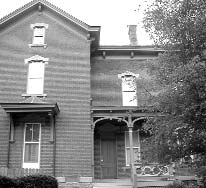3. Go
Find the Right Housing
When you've established the need for a transitional living program and identified the population you wish to serve, you're ready to make an important and complex choice: housing.
Research residential models.
 "The choice of housing type is probably the biggest issue when planning a transitional living program," says Mark Kroner of Lighthouse Youth Services, Inc., in Cincinnati, Ohio.
"The choice of housing type is probably the biggest issue when planning a transitional living program," says Mark Kroner of Lighthouse Youth Services, Inc., in Cincinnati, Ohio.
You'll need to answer three main questions:
- What type of housing is best for your clients and community?
- Will you own or lease?
- Where will the residences be?
The three most popular residential models are the clustered site, the scattered site, and a combination of the two-the step program. The best model for your transitional living program will depend on the population you wish to serve, your community, and what housing is available (see box).
 Clustered-site or group home model. Clients have individual rooms or apartments at one location. Because the clustered-site plan requires a number of youth to be housed in one place, the building tends to be supervised 24 hours a day.
Clustered-site or group home model. Clients have individual rooms or apartments at one location. Because the clustered-site plan requires a number of youth to be housed in one place, the building tends to be supervised 24 hours a day.
Scattered-site model. Clients live in individual apartments at separate locations (either alone or with roommates), and supervision ranges from low (staff dropping in occasionally) to high (staff visiting apartments on a daily or twice-daily basis).
Step, or graduated, model. When clients enter this type of program, they live at residences with high supervision (typically at a clustered site) and advance to a scattered site with more independence and less supervision.
Another important factor to consider when looking for housing is whether to own or lease the property.
Purchasing property. When an organization owns housing, it has a lot of control over clients and their living space. Owning property also means your organization is responsible for renovations and upkeep and for complying with zoning and other property laws.
Leasing residences. Leasing residences allows clients to live in various locations (scattered-site model). Your organization won't have to raise money to purchase a house or be responsible for building and plot upkeep. If you choose to lease, you'll need to decide who will sign the lease.
No matter the type of housing or lease you choose, aim for residences near the following:
- Public transportation, if available in your community
- Potential places of employment
- High schools and community colleges
- Health care clinics and hospitals
Know the housing regulations and zoning laws in the area. And, most importantly, be sure the location is safe.


 Sign up
Sign up Follow us
Follow us Like us
Like us Sign up for our RSS feeds:
Sign up for our RSS feeds: 

